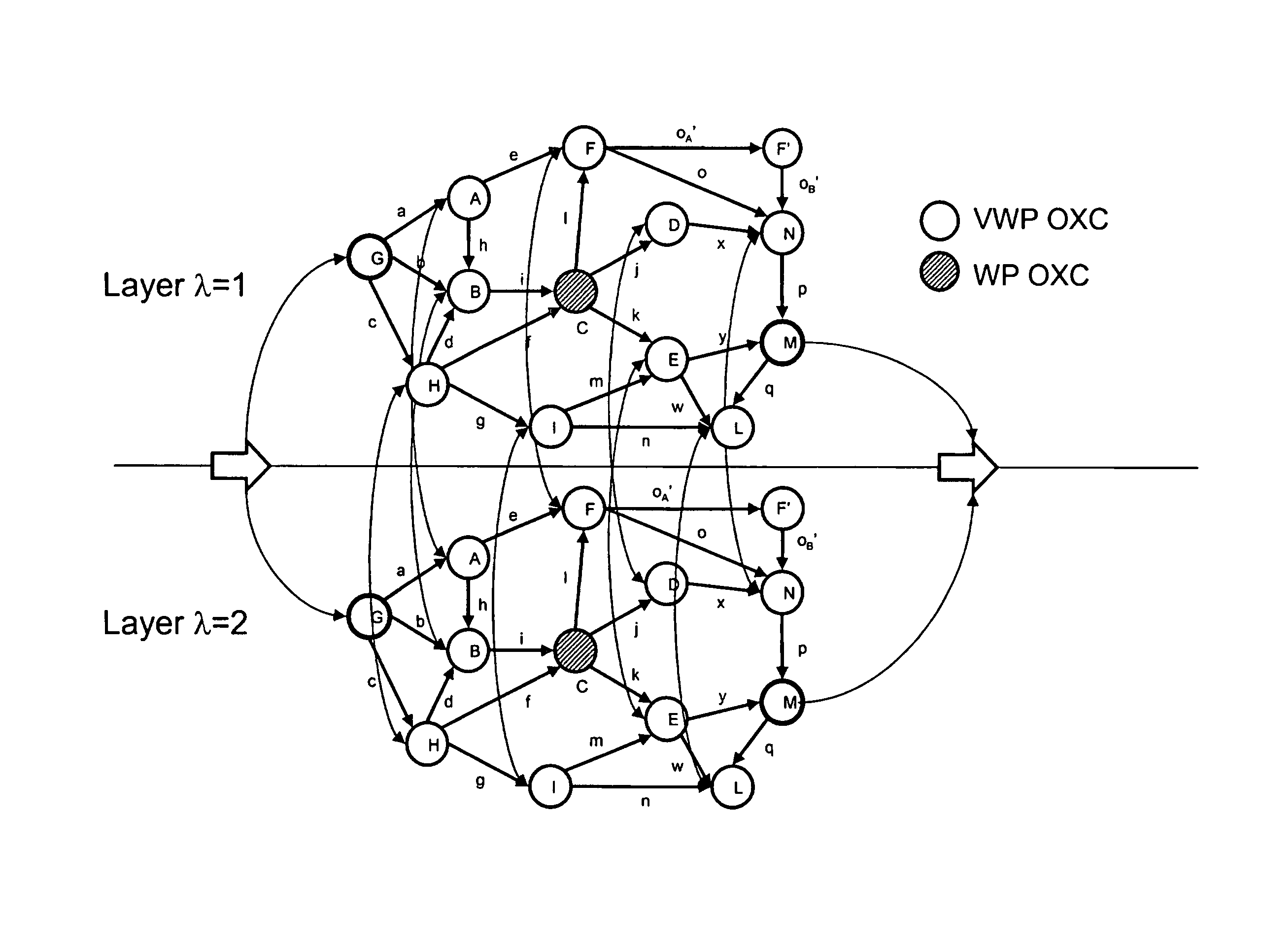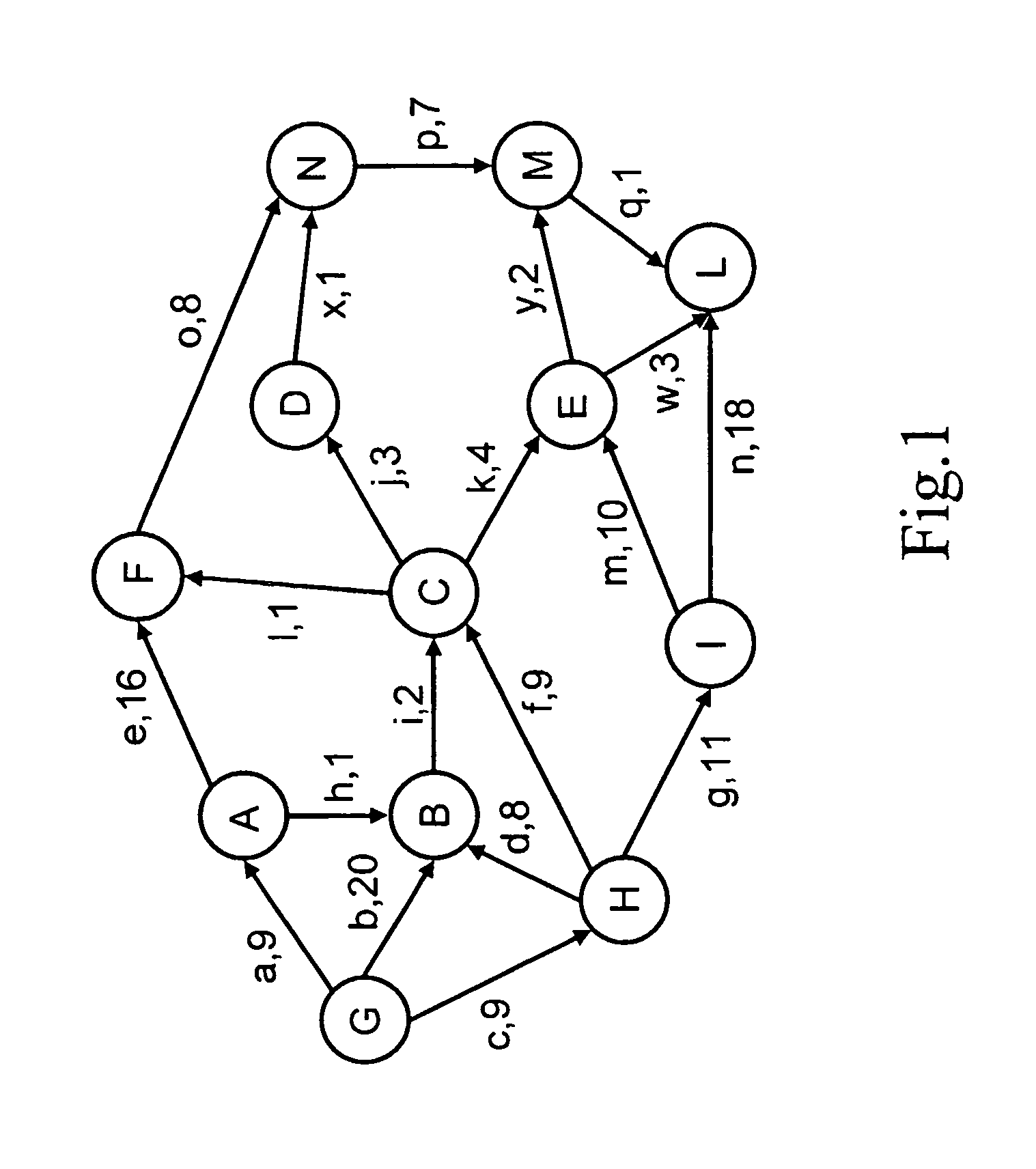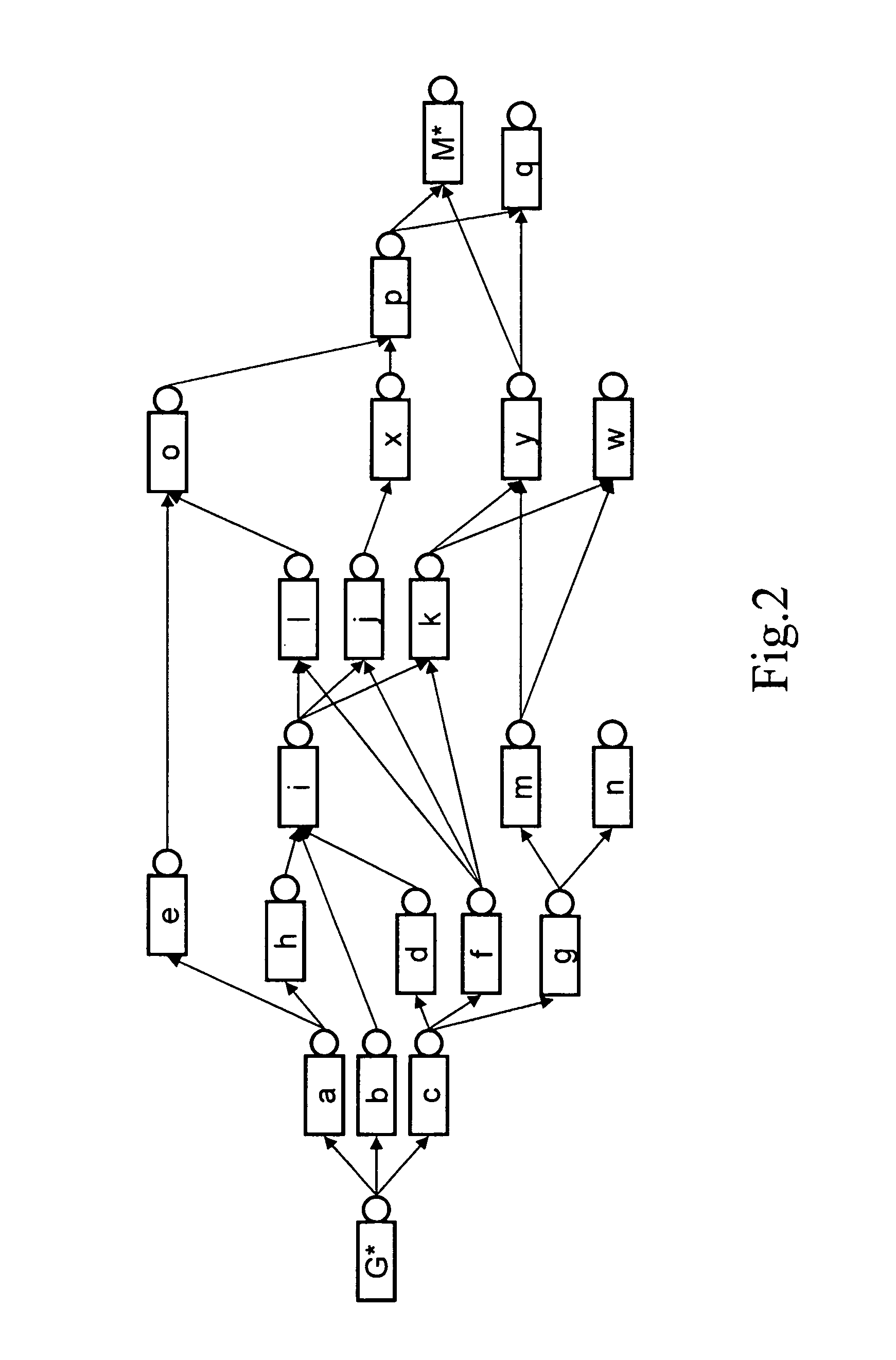Method for configuring an optical network
a technology of optical networks and optical networks, applied in the field of optical networks, can solve the problems of unfavorable network planning, unfavorable network planning, and inability to simulate, plan or provision a transport network, and achieve the effect of wasting computing time and complexity
- Summary
- Abstract
- Description
- Claims
- Application Information
AI Technical Summary
Benefits of technology
Problems solved by technology
Method used
Image
Examples
Embodiment Construction
[0064]The model that will be disclosed in the following can exemplarily be applied to an OTN / ASON (Optical Transport Network / Automatic Switched Optical Network) network scenario, possibly managed by the GMPLS (Generalized Multi Protocol Label Switching) protocol. However, it is applicable, in general, to problems in which network resources have to be assigned to any kind of traffic flow. More precisely, it is best suited to cases in which network resource assignment can be solved by graph-based algorithms. Typical applications might comprise: MPLS (Multi Protocol Label Switching), SDH / Sonet (Synchronous Digital Hierarchy / Synchronous Optical Network) network design, IP-TE (Internet Protocol / Traffic Engineering) routing, ATM (Asynchronous Transfer Mode) routing, PSTN (Plain Service Telephone Network) routing, ISDN (Integrated Service Digital Network) routing, Frame-Relay routing, X.25 routing.
[0065]With exemplary reference to a WDM network, the setup of one or more lightpaths on a WDM...
PUM
 Login to View More
Login to View More Abstract
Description
Claims
Application Information
 Login to View More
Login to View More - R&D
- Intellectual Property
- Life Sciences
- Materials
- Tech Scout
- Unparalleled Data Quality
- Higher Quality Content
- 60% Fewer Hallucinations
Browse by: Latest US Patents, China's latest patents, Technical Efficacy Thesaurus, Application Domain, Technology Topic, Popular Technical Reports.
© 2025 PatSnap. All rights reserved.Legal|Privacy policy|Modern Slavery Act Transparency Statement|Sitemap|About US| Contact US: help@patsnap.com



